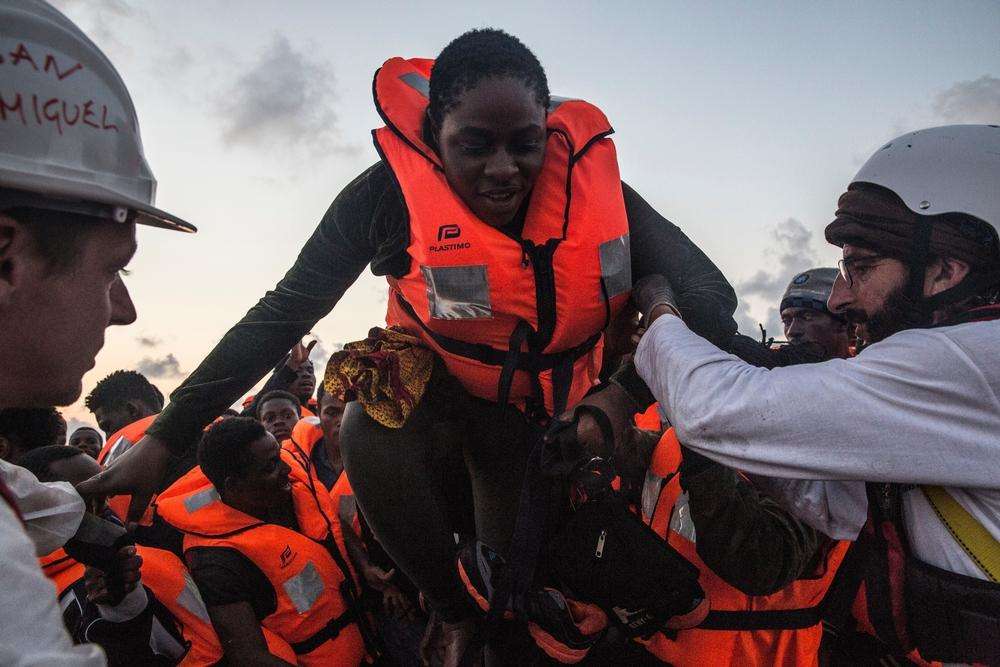According to the United Nations High Commission on Refugees (UNHCR), nearly 60 million people worldwide are currently fleeing conflict, persecution, privation, or other factors beyond their control. From Syria to Afghanistan, Eritrea to Somalia, Myanmar to Honduras, people whose homes are no longer safe and whose governments can or will no longer provide them with protection are risking everything, leaving home often with only what they can carry, and setting off on journeys fraught with danger and uncertainty.
In recent months, much of the attention around refugees has centered on Europe. According to UNHCR, 806,000 people reached the European Union zone by sea between January and November 2015, and 3,460 more either went missing or died trying to get there. Most pass through Greece via Turkey and go on through the Balkans; others cross the Mediterranean from Libya to Italy, where many become stranded in reception centers. Generally, they are trying to move north to Austria, Germany, and Sweden—places with high standards of living and traditionally more welcoming asylum policies.
The numbers are not expected to shrink any time soon. The number of displaced people across the world has tripled in the past decade, in fact, and the UNHCR estimates that 850,000 people will attempt to cross the Mediterranean to Europe before the end of 2016.
A Perfect Storm
Refugees from across the world have attempted to reach Europe for decades, so why are the numbers rising so drastically—and why is the world just beginning to pay attention—now? A number of conflicts and crises across the Middle East, South Asia, and North Africa—including the horrific war in Syria, the conflicts in Iraq and Afghanistan, the ongoing turmoil in Libya and surrounding countries, and economic desperation and instability in countries like Eritrea, Nigeria, and Somalia—have created the “perfect storm” for a refugee crisis.
Reaching Europe
Crossing the Mediterranean
Every year, thousands of people attempt to cross the Mediterranean Sea to Europe. And every year, more lives are lost during the passage.
In years past, refugees and migrants generally attempted to make the crossing to Italy in the summer months, when favorable weather meant a safer journey. But as camps fill and conditions worsen, people are becoming more and more desperate. Many pay exorbitant amounts (up to $10,000) to be smuggled onto rickety, overcrowded boats, knowing that there is a real possibility they could die in the crossing.
Many EU countries, in their efforts to deter refugees from reaching their shores, have actively avoided policies that would make the journeys less dangerous. In response, Doctors Without Borders/Médecins Sans Frontières (MSF) launched ships to help people in peril at sea, in an effort to fill the search and rescue gap. As of September 2015, the boats had rescued 16,350 people. They have also assisted 1,166 more with safe passage after they were rescued by other boats.
Overland Through the Balkans
Until September 2015, most refugees traveled through Turkey, then made the short, but no less dangerous, crossing by sea from towns on Turkey’s western coast to Greece’s Dodecanese islands (Kos, Leros, and Lesbos). But, faced with the prospect of spending a fifth winter in freezing, crowded, and underresourced camps, many Syrian refugees residing in countries like Lebanon and Turkey are now making the journey overland to Europe. Many more travel directly from Syria, or from Afghanistan and Iraq.
At many borders, security forces meet refugees with tear gas, rubber bullets, or razor-wire fences. MSF is running mobile clinics and distributing relief items at numerous points along the route. MSF offices are constantly assessing the situation and adapting operations to the changing routes, in order to be present where needs are greatest.
An Uncertain Future
Working in both the countries from which they flee and on the borders they hope to cross, MSF sees firsthand the horrific conditions that drive people to risk their lives for the chance of a better, safer future, and the toll the journey can take.
Our teams work in a host of refugee and displacement settings that do not get nearly as much attention as what’s now happening in Europe. We will continue to do so—in South Sudan, Chad, Myanmar, and other settings. But the current crises in and around Europe—and the failure of the countries involved to act—requires us to respond. In October 2015, MSF released open letters to US and European leaders, calling on the international community to take action and to ensure safe passage for those seeking a safe place for themselves and their families.




